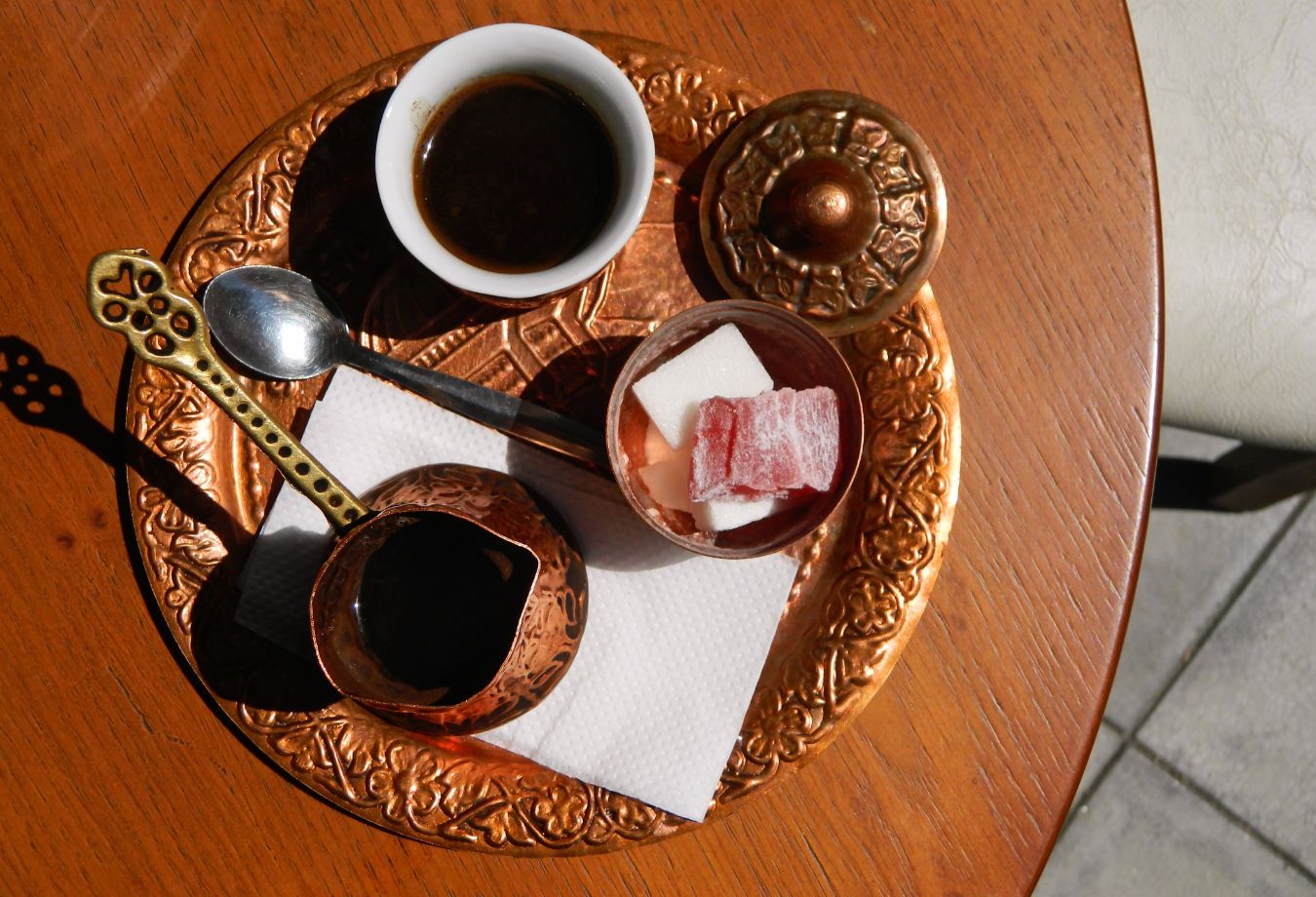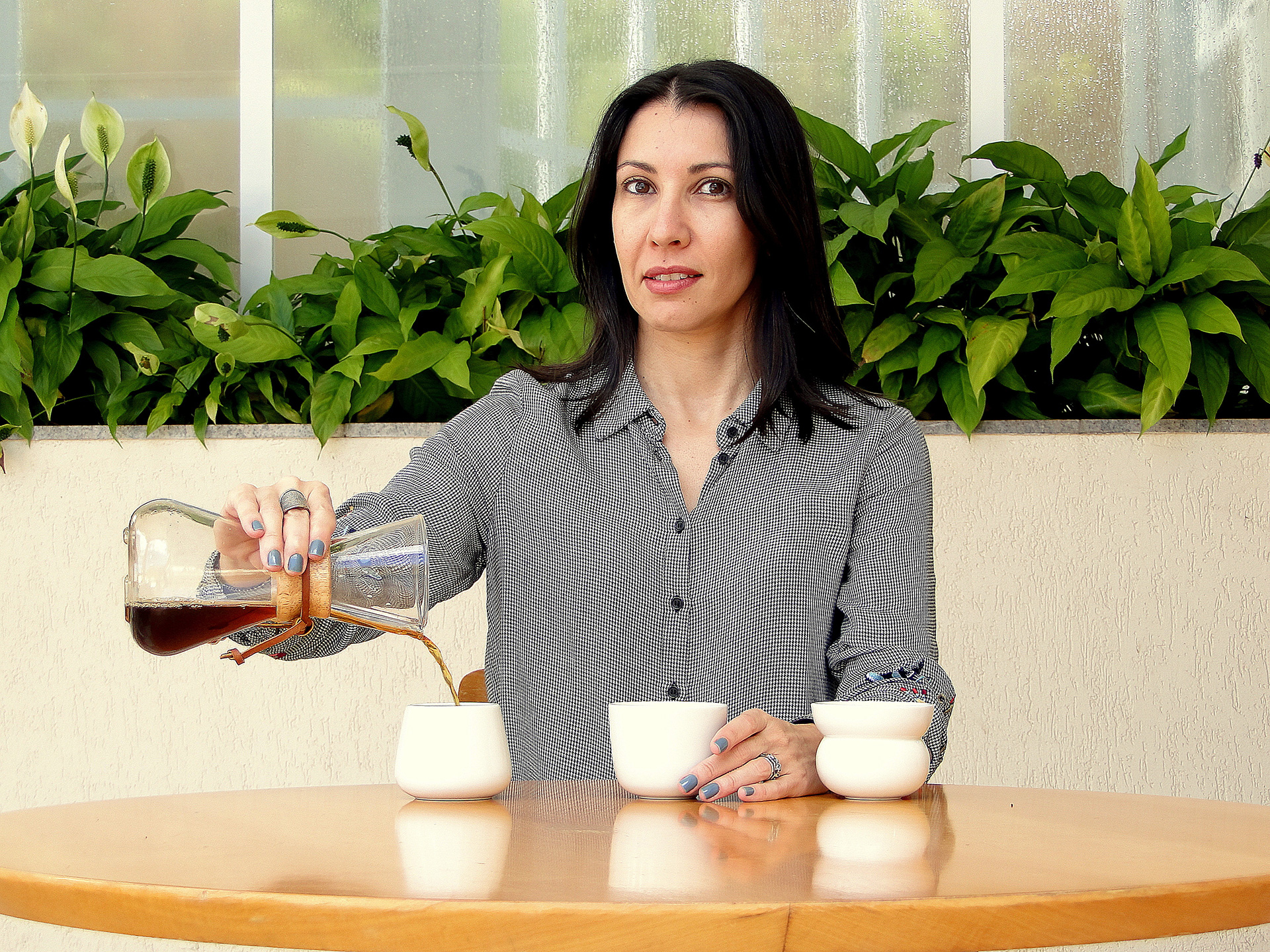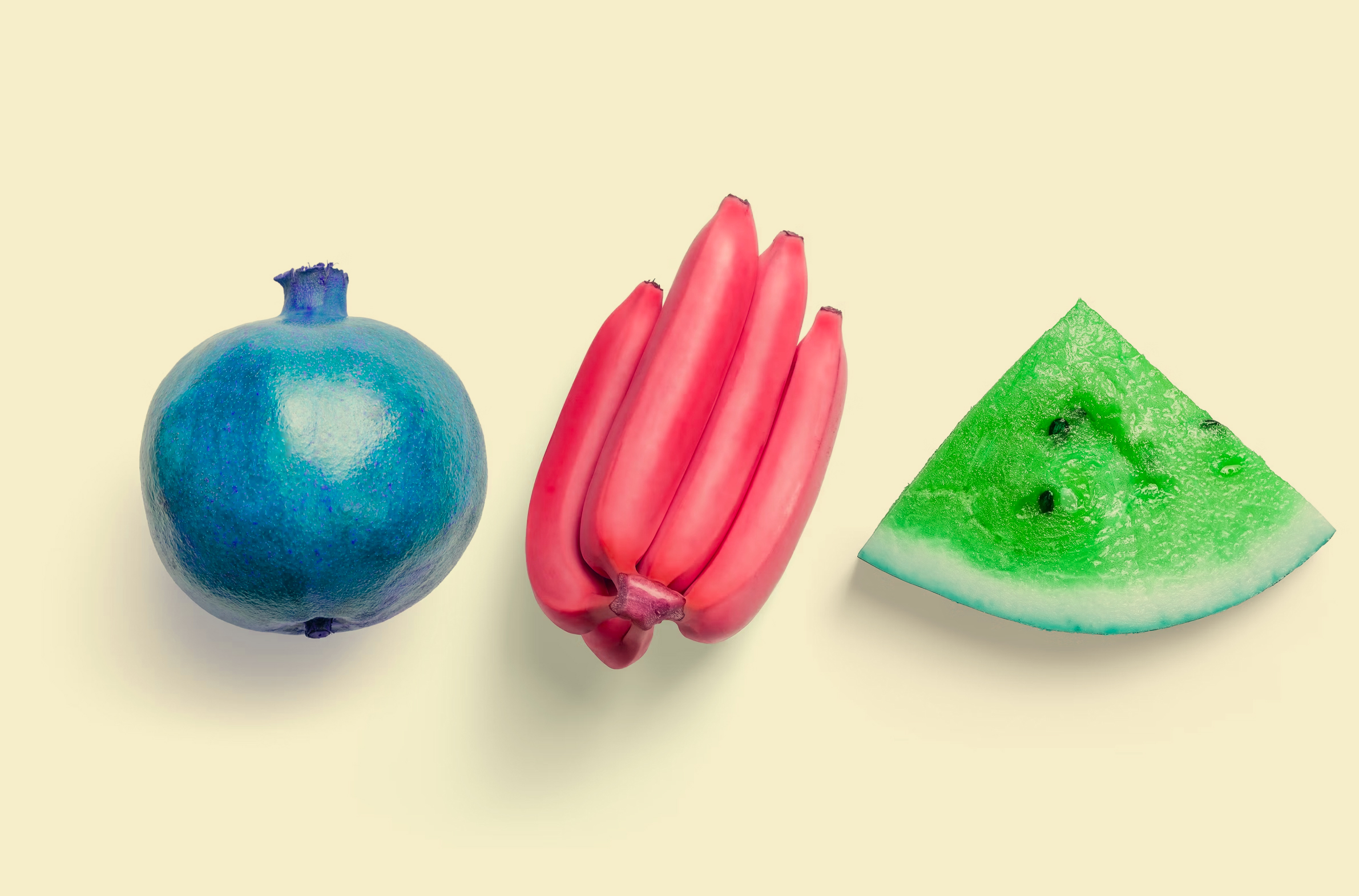
Coffee Experience and The “Multi-Sensory” effect: Coffee, or food in general, is a multi-modal experience . It is, therefore not surprising that sensations from one sense system can lead to judgments and perceptions from another. In other words, it is a combination of colors and flavors to arrive at an expectation of sensations that can accompany each other. Whenever we enjoy coffee, we take in all the information of sight, touch, smell, taste, and even hearing simultaneously. Once transmitted to the brain, this information is used to form a “sensory image” of the coffee. While taste and smell may be of primary importance, the other three senses also contribute information, which can significantly influence the perception of coffee.
” multi- sensory” or ” multi- modal ” effect
The most classic example of the multisensory effect is the Bouba-Kiki experiment, first demonstrated in 1929; since then, it has been repeated in many cultures in many different languages. In this experiment, test subjects had to indicate which image of “ bouba ” and which was “ kiki ” just by hearing the sound and seeing the shape (test independent of visual description). writing).

What’s interesting about this experiment is that the majority of respondents (approximately 95%) in several studies responded the same way: the image on the left is “bouba,” and on the right is ” kiki ,” regardless of tell other language or cultural differences.
This demonstrates that humans visually connect one sound, “ bouba ” with a round shape and another sound, “ kiki, ” with an angled shape. In this way, the sound can be considered “sharp” or “rounded.” This is a basic example of the correspondence between sound and image, closely connected in the human mind. Thus, the essence of the “multi-sensory” or ” multi-modal ” effect is when the perception from one sense becomes linked with the perception from another sense.
Remarkably, scientists and psychologists have been studying these individual sensations and their combinations for more than a hundred years. However, they have only recently been discussed in the specialty coffee industry to demonstrate that coffee is an “experience” rather than a product.
A multisensory effect or multimodal sensory experience is a perception that involves the interaction between two or more different senses.
Excerpt from Sensory Science
But what about the other senses involved? Extending the Bouba-Kiki test, a reviewer was asked to match sweetness with one shape and sourness with another. Try it for a moment. Do you associate sweetness with “ bouba ” and sourness with “ kiki ”? What about “ body ” or “ bitter ”? Studies have shown that this exact multimodal effect also exists for the sense of taste, combining angular shapes (kiki) with bitter/sour and round shapes ( bouba ) with sweet.
The smell is the main contributor to taste
Many people think that taste and aroma (scent) are the same. But “taste” is just a concept, and it refers to the basic sensations: bitter, salty, sour, sweet, and umami that are expressed in the brain from information gathered on our tongue. “Taste,” on the other hand, is a much more complex combination of senses and processes, including touch, smell, taste, and sight. It’s a multi-sensory experience and one of the most remarkable things we can understand about a multi-sensory experience.
One of the most “classic” challenges of sensory evaluation of coffee – also the most common example of multisensory effects. It’s the “sweetness” (or sweetness ) in coffee. Is sweetness in coffee a “base taste,” like the sweetness of a sucrose solution? Many scientists have doubts about whether coffee has a genuine sweetness: As a result, very few compounds that makeup sweetness exist in coffee. Just the most straightforward sugars, such as arabinose, mannose, fructose, glucose, etc., make up only a tiny percentage of the other ingredients and are primarily destroyed during roasting. On the other hand, if we estimate by numbers, between 75 and 95 percent of what people commonly describe as “taste” comes from the sense of smell behind the nose; sweetness also falls among these.

Thus, the elusive sweetness so many tasters describe in coffee comes from multisensory effects – or more precisely, through the olfactory pathway behind the nose, to processed by the brain, summed up as “sweet taste.” Because coffee contains a lot of sweet-smelling aromatics, we already know there are smells reminiscent of sweet foods, such as vanilla and caramel, molasses, syrup, etc. Several other studies have shown that the sweetness of the sucrose solution is enhanced through a multimodal effect when vanilla is added and that the sweetness in coffee is, therefore a multimodal effect rather than merely ‘taste.’
As such, we can know our senses are interconnected as a system. Researchers have demonstrated that inputs from sight, hearing, taste, and smell can be linked to and, indeed evoke memories and emotions in the human brain. In this way, the senses – or modes of perception, are experienced together as a “multimodal” experience.
Color & Taste Interaction
Going deeper into this concept, experimental psychologists have shown that perception from a single sense can influence perception in other purposes. In other words, the multisensory effect reminds us of single-sensory experiences and can actually create or enhance experiences through other senses. Among the multisensory associations (taste and olfactory interactions, touch and taste, color and taste, etc.), the correspondence between color and taste is one of the most studied. . We tend to associate specific colors with specific tastes, e.g. red/pink is often associated with sweetness, green with sour and black with bitterness. Not only do we tend to seek out red foods and drinks to make them sweeter (at least in the context of fruit), but evidence has shown that food is served in red/pink bowls or cups. can also taste sweeter than food from a white bowl or cup.
In the coffee sector, through SCA, Fabiana Carvalho – PhD in Neuroscience from Brazil, recently published a study demonstrating that cup color can significantly affect sweetness.
Even for experienced coffee tasters, the color and weight of the cup influences their assessment of the coffee itself. Specifically, coffee served in a black cup was rated as fuller and stronger than the same coffee in a white cup; special pink mug with sweet expectation ; and white with higher acidity. While, the rounder the cup, the higher the expectation for the “sweet” taste of the coffee, on the other hand, the heavier cup is judged to have a longer aftertaste than in the lighter cup.

Product packaging designers have been taking advantage of multi-sensory effects long before they discovered them. Since many multi-sensory effects stem from visual perception, designers often create packages with “intentional” colors or shapes to create an additional experience of the smell or taste of food. inside. However, judging these packaging designs from a multimodalist’s point of view, it seems clear that packaging was created intuitively or subconsciously to harmonize with the overall experience.

Today, there are many ways to apply these types of cross-concepts in packaging design and food technology. Different shapes, colors, thicknesses, textures, etc. will affect the perception of smell and taste of food. Example: The angular shape (with lots of sharp, cut corners) is common on the labels of carbonated drinks as a way to raise awareness of astringent or acidic flavors. These “kiki” motif shapes can act as a cue to recognize the desired crisp feel of these drinks.
In the coffee world, this can be taken into account to enhance the consumer experience of coffee. For example, if a barista wants to enhance a consumer’s experience of sweetness with a certain coffee, they might choose to serve it in a pink or red cup. If a roaster wants to package their coffee and emphasize the acidic character of their coffee, they can pack it with a yellow or green label and include .
Other types of multisensory interactions
On the other hand, the multisensory effect is not just a product of suggestion, it occurs in our brains, in the processing centers of many senses. Therefore, it is unlikely to “train” multisensory perception in people, since it is part of the nervous system. For this reason, sensory professionals and cuppers must find a way to understand and respect the multisensory effect, and be able to harness its power in applications such as Product packaging design or experience enhancement.

As expected (according to the wine industry literature), the tulip-shaped cup enhances the perception of aroma. The sweetness received the highest score in the figure 8 cup (right cup in the picture), followed by the tulip shaped cup. Despite the enhanced sweetness and acidity, the figure 8 cup received the lowest ratings from amateurs – not experts. Since the figure 8 cup did not match any of the test participants’ everyday drink patterns, including coffee cups, the “atypical” nature of the cup could negatively affect their coffee drinking experience. Some studies show that a degree of design novelty can actually lead to a decrease in user preference. On the other hand,
Compared to color, we have less information about how the weight of eating utensils can influence the perception of food. Only in the last few years has it been proven that greater weight – whether it is a box of chocolates, a can of soft drink or even a cup of coffee, increases the perceived intensity of taste as well. as the consumer’s willingness to pay.
Qian Janice Wang, 2020
Challenges in sensory evaluation of coffee
However, there are situations where sensory cues do not match our multisensory connections. For example, when you drink a glass of red juice but it tastes like banana, the difference between taste expectations triggered by the color of this juice is the exact opposite of the actual taste experience. economic. This often leads to negative expectations, thus making the consumer experience less enjoyable. Sensory scientists call this type of interaction “ sub-additive ”.

Cultural expectations for certain foods can certainly influence how we perceive those foods. Think of Western diners’ apprehension towards insect-based dishes, while in some Eastern countries they are common foods. Past events in your life can affect how you perceive food or drink as an adult. If you had a bad experience eating something, such as as a child, chances are you won’t like it as an adult. In addition, some multimodal associations such as round-sweet and black-bitter seem to be invariant across cultures, while others are culturally background-dependent, such as taste stimulated. activated by blue.
For coffee, cupping professionals will have to find a way to minimize or normalize the multisensory effect of the tasting process and find a way to be neutral or objective. Reducing extraneous sensory input (such as keeping the cupping room quiet and decorating in neutral colors) helps to minimize any auditory or visual cross-perception effects. Even the hardness, weight, material type or texture of the spoon (spoon) can affect the cupping process. When comparing scores obtained from independent cuppers using different instruments or in different environments, the influence of multisensory effects should be considered and should be considered as a source of influence or error. significant number.
Fabiana Carvalho is the Brazilian postdoctoral researcher behind The Coffee Sensorium , a project that aims to bring multi-sensory perception of taste to the world of specialty coffee. A lot of multi-sensory research has been done on taste perception of other beverages, such as wine and beer, and so F. Carvalho is doing research and training on how application of multisensory effects in the world of specialty coffee.
Reference:
- Hiệu ứng “đa giác quan” trong trải nghiệm cà phê: https://primecoffea.com/hieu-ung-da-giac-quan-trong-trai-nghiem-ca-phe.html
- https://www.instagram.com/thecoffeesensorium/